A Clinical Analysis Of Cloud's Psychology, Part III - Reintegration And Unconditional Love
A Clinical Analysis of Cloud's Psychology, Part III - Reintegration and Unconditional Love

This is the conclusion to my series on Cloud's psychology, where I will discuss identity reintegration. The original was posted on Reddit. You don't need to have read the other posts to understand this one, but it's highly encouraged so you can follow my overall train of thought. I'll still include a quick and dirty review of the important concepts from Part II that will be relevant here. To provide some background, I'm currently training in clinical diagnosis and psychotherapy to become a psychologist. I want to apply what I know to break down our understanding of Cloud in a clinical context.
Part I - Trauma, Dissociation, and Psychosis Part II - Identity, Self-Concept, and Mako Part III - Reintegration and Unconditional Love [you are here]
I find the term reintegration very fitting, considering that Cloud's recovery is portrayed by multiple Clouds coming back together again into one whole person. We've established how Cloud's sense of self was shattered through a combination of trauma, Jenova cells, mako poisoning, and his innate desire for strength. In the real world, he'd likely need therapy over his entire lifetime in order to reorganize his identity. But since this is Final Fantasy, Cloud has access to a special metaphysical experience. When Cloud and Tifa fell into the lifestream, he was able to literally pull Tifa into his subconscious and enable her to help organize his memories. I'm going to discuss how and why this works, as well as why Cloud needed Tifa specifically. I'm NOT trying to put a shipping angle on this, I'm just primarily interested in what it took for Cloud to heal, and it's impossible to ignore Tifa's importance in this case.

Quick Recap of Self-Concept
Self-concept, or your understanding of who you are, is made up of three main parts:
Ideal Self - Who you want or aspire to be
Real Self - Who you actually are
Self-Image - Your mental picture of yourself
A good self-image relies on congruence between the ideal self and the real self. Basically, the more similar they are, the better your self-esteem. If they are dissimilar, then it creates incongruence that reduces self-esteem.
Cloud's ideal self wants to be strong, but his real self never made SOLDIER, resulting in incongruence and low self-esteem for much of his life. After Zack's death, Cloud's ex-SOLDIER persona was born inspired by his ideal self, made to help him process his trauma. This boosted congruence but caused him to dissociate from his real self, leaving him vulnerable to manipulation.
The Importance of Tifa

The cornerstone of identity reintegration in the real world is relational support. Because the individual can't rely on himself to reorient who he is, he needs someone else that is able to do that for him, to contain his uncertainties. This often refers to the therapeutic relationship between a patient and his therapist, where the therapist's assurance provides support to the patient and helps him gain the confidence to safely explore his identity. It's clear that for Cloud, the person who helps him reorient his sense of self is Tifa. While Tifa serves the important role of helping Cloud clarify his memories, this alone isn't sufficient for reintegration, the same as how confronting people with the truth doesn't resolve their delusions. It's Cloud's relationship to Tifa that gave him a source of stability to ground him.
In Cloud's subconscious, Tifa helped Cloud remember key parts of his past that explain who he is in the present and why he knows the things that he does. In psychology, the subconscious contains information that isn't immediately part of a person's awareness, therefore this tells us that Cloud indeed still has his real self buried within him. One of the Clouds is different, a child version of him that is meant to represent his true feelings and therefore can be thought of as his real self. This child Cloud ends up explaining the roots of his identity, primarily his ideal self and how it came to be. Child Cloud explains to Tifa that the reason he wanted to join SOLDIER was because he failed to protect Tifa from falling at Mt. Nibel. This tells us that Tifa is at the root of Cloud's ideal self, something that I will keep emphasizing as the key to her importance.
Because Tifa is the root of his ideal self, she is also a massive determinant of Cloud's self-image. This is precisely why Tifa ended up being the final key to Cloud's breakdown at the Northern Crater. When a relational support is feeling anxious or overwhelmed, this spills over to the person relying on her. Prior to Cloud's disappearance after he gave Sephiroth the black materia, Tifa wasn't able to fully be there for Cloud because of her own confusion and apprehension towards Cloud's ex-SOLDIER persona. This only escalated when Sephiroth used her memories against Cloud, casting doubt on whether or not the Cloud she saw in front of her was Cloud from Nibelheim. Remember, the looking glass self draws self-esteem and self-image from how other people see the individual. When Cloud was unsure of who he was, he attempted to look to Tifa for reassurance, and in the moment she was unable to provide that.
Once they're in the lifestream, a large part of what Tifa did was help Cloud affirm that his memories are real. The spent a lot of their time in Cloud's subconscious comparing his memories to Tifa's. But, it was only when Cloud recalled memories that even Tifa couldn't recall that they truly began to make progress with Cloud's identity reintegration. Tifa didn't dig up Cloud's memories, but notably she prompted Cloud to recall why he wanted to join SOLDIER in the first place. Through this, Cloud was prompted to remember the failures that led to his enlistment. Cloud seemed hesitant to talk about his childhood memories related to this, but Tifa provided continuous encouragement as he walked through what happened. And, by recalling why he wanted to join SOLDIER, Cloud was reminded that he never lived up to that dream, directing them to reflect on the Nibelheim Incident again.
Unconditional Love
If we're trying to look at this from a psychology angle, I'd argue that confirming Cloud's memories isn't the most important thing Tifa did for him. The treatment modality that real world therapists use for identity reintegration is called unconditional positive regard, which is unconditional acceptance of a patient as he is. This is telling the patient, "I'm not here to judge you, I will see you and accept you for who you are." This is how the therapist helps the patient manage his fears and anxieties, creating the space for safely exploring his identity. But Tifa isn't Cloud's therapist, she's a dear friend who has a personal relationship with him. When talking about how loved ones help people experiencing identity problems, we say that their unconditional love is what supports the individual. This is why Cloud needed a loved one to be there with him in his subconscious, so that he could find the courage to explore it. Tifa's devotion in particular is so strong that she decided to stay with him in Mideel, when he was at his weakest. Cloud can easily find assurance that she is there to stay and that even when he is weak, she will still accept him. Also, it's worth mentioning that by allowing Tifa into his subconscious, Cloud is expressing unconditional love for her as well. He doesn't blame her for doubting him and still seeks comfort and reassurance from her.

Remember that Cloud's self-esteem is built upon his ability to protect those he cares about. However, Tifa's unconditional love allows him to reshape how his looking-glass self works. Crucially, she affirmed that Cloud did keep his promise, that he did protect her during the Nibelheim Incident. It's a fairly quick moment in the OG, but arguably one of the most important things Tifa says in the story. Cloud felt like he's been failing Tifa for years, but once Tifa tells him that he kept his promise after all, she is telling him that his real self is more congruent with his ideal self than he thinks. Remember, Tifa is at the root of Cloud's ideal self, which is why he cares so much about what she thinks. By providing affirmation, Tifa gave Cloud a means to reconceptualize his self-esteem in a more positive manner. Her unconditional love is also what gives him the courage to openly admit his facade to the rest of the party later on. There also, when Cloud explains how his ex-SOLDIER persona was an illusion, the party doesn't judge him or chastise him for it. They listen to him openly and accept him for who he is, providing unconditional love through their unyielding support for the main mission. This is another rather quick scene, but very necessary for Cloud nonetheless.
Tifa provided Cloud with unconditional love and affirmed congruence between his real self and ideal self. This positively affected his self-esteem and overall self-image, giving him a pathway back to accepting his true self and reintegrating it into his self-concept. It's very clever how the true retelling of the Nibelheim Incident manages to clear up their memories and provide Cloud with affirmation at the same time. I think this is why Cloud is able to reintegrate his identity so shortly after revealing that he was there at the Nibelheim Incident.
Final Thoughts
Something else that came to mind while thinking about Cloud's reintegration is the fact that mentally, he is still around 16 years old. Developmentally, Cloud is still in a period where he would be exploring who he is and looking to the people around him to affirm him. Self-esteem is important for everyone, but especially volatile during adolescence. Teenagers are especially sensitive to other people's opinions, which only highlights the fact that Cloud truly needed to hear affirmation and encouragement from someone else. Because of this, and because of the emotional growth that Cloud experiences, I'd argue that in some ways you could think of his character arc as a coming-of-age story.
Cloud's personal journey is my favorite part of FFVII, and it's amazing to me how well it fits in with real world psychological concepts. I believe that it will be largely preserved from the OG, with expansions to add depth and nuance to Cloud's experience. He's the hero that was never really meant to be a hero but ended up saving the world anyway, and one of my favorite characters in fiction. I hope that my analysis successfully conveys the deep appreciation I have for Cloud's character.
I also might do a similar analysis on Sephiroth eventually?
More Posts from Terra-fatalis and Others

Pretty boy
I'm still a beginner in Japanese but maybe I can help (anyway, take me with a grain of salt).
Here there are some etymological info about Wutai and Da Chao.
As the link says, the literal meaning of 五台 is "five plateaus" both in Chinese and in Japanese. In Japanese the name of the mount is written in the same way but it's pronounced the japanese way, ごだい godai (in both languages 五 means "5" and 台 means "platform"). Anyway, in the game Wutai is written in katakana (which is usually the writing system used for foreign words), keeping the original Chinese pronounce ウータイ.
I checked some pictures of Da-Chao statue and it seems it's formed by only 4 figures, but in the pagoda quest Yuffie has to fight against five different enemies (and other meanings of 台 are "elevated area" and "level"), so maybe that's indeed the reference.
Anyway - side note - the names of the 4 fighters and Godo himself have nothing to do with Japanese/Chinese cultures or Buddhism, they actually derive from the names of western playwrights: Gorki, Shake, Chekov, Staniv, Godo. Fandom links the origin of Da-Chao to a Tibetan temple but following this logic it could be linked to something that has nothing to do with Buddhism as well. It's written in katakana so it's difficult to trace the potential chinese etymology.
As for Fort Tamblin, タンブリン in Japanese means "tambourine".
Wutai names - etymology
FFVII scholars, can you help?
There’s a sacred mountain in Shangxi Province, China, called Mt Wutai. This may be where SE got the name for the land of Wutai in FFVII, or it may not, and I don’t know what the characters 五台 mean in Chinese, but we do know Wutai is the name of a real place, like Costa del Sol.
But what about Fort Tamblin, which in Japanese is タンブリン? Does it mean anything? Is it meant to mean anything?
And Da Chao? Does it mean something?
As far as I can remember, Fort Tamblin, Da Chao and Wutai proper are the only three locations in Wutai for which we have name.
FFVIIR Yuffie DLC after credit’s scene
****MAJOR SPOILERS BELOW****






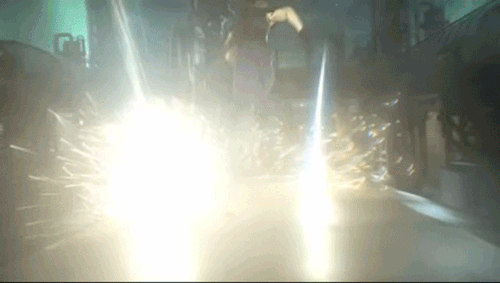
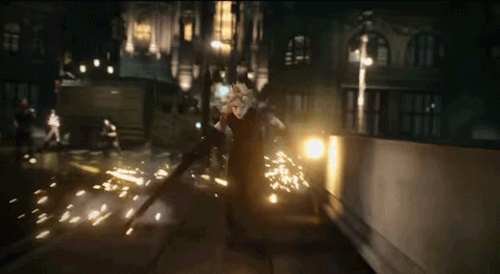
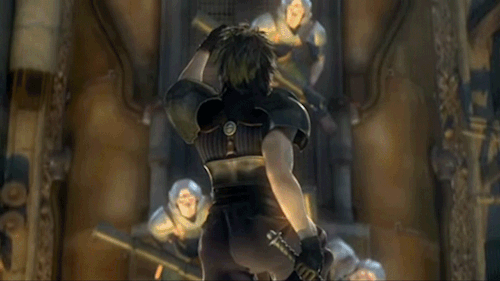
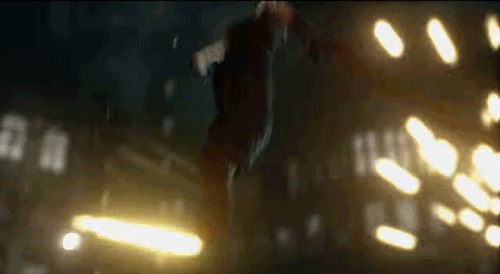
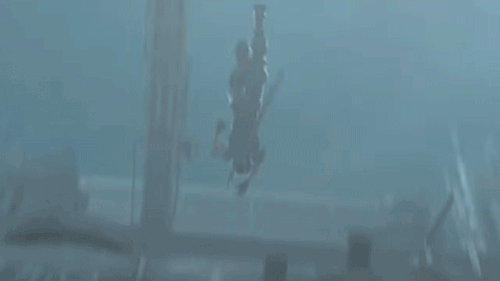
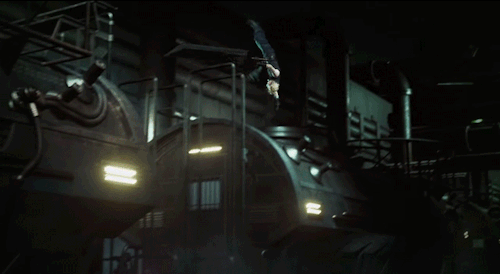
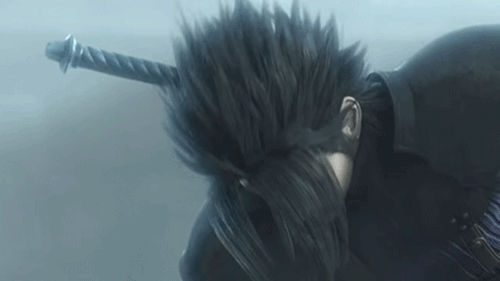
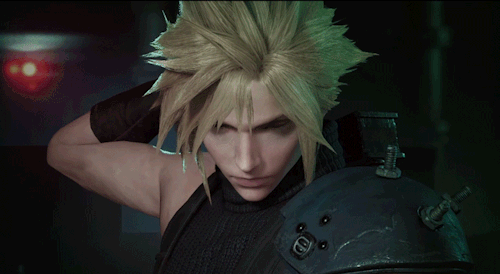
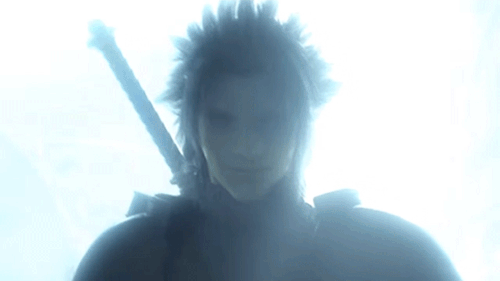
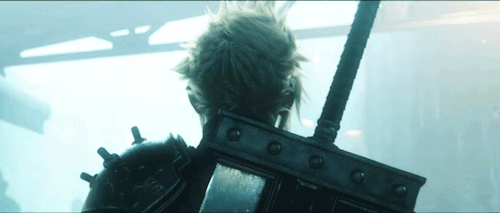
Zack and Cloud parallels
Crisis Core vs. Final Fantasy VII Remake
FFVII Remake Easter Eggs and compilation continuity - Part 4: DIRGE OF CERBERUS
[Includes: DoC Online Multiplayer - DoC - DoC Lost Episode]

SHINRA’S DARKEST SECRET
In Chapter 3, Weimar tells Cloud and Tifa of the rumors about undregroud secret labs. In Chapter 13, after the plate fall, Cloud, Barret and Tifa enter this mysterious underground facility full of monsters and Mako tanks.
7R: There’s a crazy story about a Shinra research lab hidden right beneath our feet - under the slums.
DoC: Deepground soldiers. (...) The shadow of the Shinra company, constructed by the former president and completely hidden from the rest of the world. (...) His goal was to create an army of superhuman warriors - not once letting morality interfere.


INTERMISSION
During Intermission it is not only confirmed the existence of Deepground but Yuffie and Sonon fight against some soldiers in their DoC uniforms.
Nero: "Team"? Fool. There are no "teams" in Deepground.
Yuffie: Deep...ground?
Nero: The place where my brother and I like to play.

WEISS AND NERO
After getting to Deepground Yuffie and Sonon had to fight against one of the Deepground Tsviets, Nero. Meanwhile Weiss was added as a boss fight in the Shinra Combat Simulator.

VITUAL REALITY
The overall concept of Shinra using VR simulators comes from DoC. In particoular, in DoC Multiplayer SOLDIERs and Tsviets used to train exclusively in VR arenas.

MOOGLE YUFFIE
During the first half of Intermission Yuffie wears a tattered cloak with a moogle hood. This piece of clothing appeared for the first time in Dirge of Cerberus.


Study i got carried away with



Woof
Talk about a coincidence!
(Find the previous post here)
Tiny beautiful details: little CloTi hint
Final Fantasy universes are populated by all kind of fantastic creatures and monsters, like Moogles, Chocobos, Bahamuts, etc..
Cloud has always been compared to Chocobos by fans because of his hairstyle. In the OG Tifa points out this resemblance.

In Chapter 9 of the Remake Chocobo Sam compares Tifa to a Bomb. The name of the side quest is A dynamite body so we can guess the reason of his comment.

Interestingly enough, in the OG Tifa compares Cloud to a Chocobo when the group finds the bird’s nest on the way to Mt Corel, and the “Bombs” could be fought for the first time on the bridge in Mt. Corel.
---
The following picture is Tifa’s key art for Final Fantasy VII Remake. She is wearing her default weapon, the Leather Gloves. Their description is: Well-worn leather gloves that have seen their fair share of fights. It implies that she’s had them for a long time.

...Now let’s take a closer look at her bracelets

Do I need to add anything else?
EDIT:
Sure I do!!! In Chapter 10, when Aerith and Tifa talk about going shopping together, Aerith sais Cloud will be their pack-Chocobo!
...What a coincidence!
FFVII Remake Easter Eggs and compilation continuity - Part 9: EXTRAS

CLOUD’S SECRET
Now everything makes sense

“HAIRTONIC Ideal Scalp Care. For astonishingly radiant & spiky hair!”.
TASSELLATION
This particoular tassellation, alternating squares and octagons, present in many parts of the Remake, appeared also in other previous parts of the compilation.

VICTORY POSES
After the victories at the Colosseum and in the Shinra combat simulator, the characters perform their OG victory poses.

WEAPONS
If the player finds Corneo’s secret stashes they can fins three tiaras (Ruby, Emerald and Diamond tiaras) inspired to the OG Ruby, Emerald and Diamond Weapons.

NATURAL OASIS
While in Trace of Two Pasts is stated that Elmyra’s house was full of flowers and plants even before the arrival of Aerith, it surely isn’t a coincidence that the sector she lives in, contrary to the rest of Midgar, is full of nature. Moreover the orphanage near her house is called “Leaf House” and the name of the teacher is Mrs Folia (”leaf” in Latin).

STARGAZER HEIGHTS
The place where Tifa lives in Sector 7, and where she suggests Cloud to live too, is a wooden building called Stargazer Heights, which is a reference to the water tower where they shared the promise. I’d say also that the presence in the same building of a black caped man isn’t a coincidence, considering that the first time these beings bould be spotted in the OG was indeed Nibelheim.

MATCHING OUTFITS
Tifa: Be sure to pick an outfit that goes with mine, okay?
Cloud: Will do.
Nailed it.
Jokes aside there’s a subtle clever mechanism behind the choice of the Wall Market dresses.
- If the player prefers Tifa, they’ll probably choose the refined dress and will have a good chance to get Chocobo Sam’s odd jobs (giving answers a bit more pro Tifa), so both Cloud and Tifa will wear the blue outfits.
- If the player prefers Aerith, they’ll maybe choose the sporty dress and will have a good chance to get Madam M’s odd jobs (giving answers a bit more pro Aerith), so both Cloud and Tifa will wear the satin outfits.

BARRET’S DEATH
I’m not totally sure here if this was intentional, but when I saw Barret’s death I couldn’t help but think that during the first drafts of the OG he was the one who had to die instead of Aerith.

CAPED CREATURES
We don’t know yet if there’s any connection between the Whispers and the Black caped men, but it’s hard not to notice the visual similarity of their designs.

BOOKS AND ADS
- PROFESSOR GAST
In Aerith’s childhood room in Shinra HQ there’s a book about the Lifestream written by Gast Farmeis, Aerith’s father.

- FAN CLUBS
In the same room there’s also a book about Stamp mentioning his fan club, which is an element that comes from Crisis Core

- COSTA DEL SOL
There are some signs in Sector 8 - more a music disk - about Costa del Sol.

- FFVI
In one of the ads inside the trains there’s a FFVI quote from an author called “Gabbiani” - Setzer’s last name.

- FFX-2
In Shinra’s museum there’s a picture with a FFX-2 character, Shinra.







“Tifa said to take you home, kid.”
-
 whyh3lloth3r3 reblogged this · 6 months ago
whyh3lloth3r3 reblogged this · 6 months ago -
 hungrybaguette liked this · 7 months ago
hungrybaguette liked this · 7 months ago -
 happycrocodile07 liked this · 7 months ago
happycrocodile07 liked this · 7 months ago -
 greenwaterskeeter liked this · 8 months ago
greenwaterskeeter liked this · 8 months ago -
 bananacheese69 liked this · 10 months ago
bananacheese69 liked this · 10 months ago -
 akar3n reblogged this · 11 months ago
akar3n reblogged this · 11 months ago -
 theshenami liked this · 1 year ago
theshenami liked this · 1 year ago -
 skeettles liked this · 1 year ago
skeettles liked this · 1 year ago -
 beifongkendo liked this · 1 year ago
beifongkendo liked this · 1 year ago -
 dollallure liked this · 1 year ago
dollallure liked this · 1 year ago -
 tifa-simp reblogged this · 1 year ago
tifa-simp reblogged this · 1 year ago -
 whathas4letters liked this · 1 year ago
whathas4letters liked this · 1 year ago -
 daldolorenasceilcoraggio liked this · 1 year ago
daldolorenasceilcoraggio liked this · 1 year ago -
 lewstherintelescope liked this · 1 year ago
lewstherintelescope liked this · 1 year ago -
 ritaemma liked this · 1 year ago
ritaemma liked this · 1 year ago -
 lunailyn liked this · 1 year ago
lunailyn liked this · 1 year ago -
 mrsong11 liked this · 1 year ago
mrsong11 liked this · 1 year ago -
 segitcil liked this · 1 year ago
segitcil liked this · 1 year ago -
 whathas4letters reblogged this · 1 year ago
whathas4letters reblogged this · 1 year ago -
 wingedgardencookiepeanut liked this · 1 year ago
wingedgardencookiepeanut liked this · 1 year ago -
 momorgan00 liked this · 1 year ago
momorgan00 liked this · 1 year ago -
 moonilit reblogged this · 1 year ago
moonilit reblogged this · 1 year ago -
 daisy-stardust liked this · 1 year ago
daisy-stardust liked this · 1 year ago -
 starglossed liked this · 1 year ago
starglossed liked this · 1 year ago -
 chuunyaz liked this · 1 year ago
chuunyaz liked this · 1 year ago -
 cyraspace01 liked this · 1 year ago
cyraspace01 liked this · 1 year ago -
 slothinginorbit reblogged this · 1 year ago
slothinginorbit reblogged this · 1 year ago -
 slothinginorbit liked this · 1 year ago
slothinginorbit liked this · 1 year ago -
 nktsarchive liked this · 1 year ago
nktsarchive liked this · 1 year ago -
 prismafrog liked this · 1 year ago
prismafrog liked this · 1 year ago -
 xstargazersx liked this · 1 year ago
xstargazersx liked this · 1 year ago -
 cassiansrebel liked this · 1 year ago
cassiansrebel liked this · 1 year ago -
 where-all-the-ladders-start liked this · 1 year ago
where-all-the-ladders-start liked this · 1 year ago -
 nalagoldlindtruc liked this · 1 year ago
nalagoldlindtruc liked this · 1 year ago -
 ashleylambart01-blog liked this · 1 year ago
ashleylambart01-blog liked this · 1 year ago -
 yanagi-uxinta liked this · 1 year ago
yanagi-uxinta liked this · 1 year ago -
 stuck-at-kfc4ever liked this · 1 year ago
stuck-at-kfc4ever liked this · 1 year ago -
 arielamelia liked this · 1 year ago
arielamelia liked this · 1 year ago -
 cosybeetees liked this · 1 year ago
cosybeetees liked this · 1 year ago -
 vilify liked this · 1 year ago
vilify liked this · 1 year ago -
 wraaaith liked this · 1 year ago
wraaaith liked this · 1 year ago -
 caitlinluvsmanga liked this · 1 year ago
caitlinluvsmanga liked this · 1 year ago -
 zzzb34r liked this · 1 year ago
zzzb34r liked this · 1 year ago -
 superdarkfuntimes liked this · 1 year ago
superdarkfuntimes liked this · 1 year ago -
 inver reblogged this · 1 year ago
inver reblogged this · 1 year ago

Hardcore FFVII fan sharing theories & fanart, sometimes silly stuff ⋆ AuDHD ⋆ She/her ⋆ INTP ⋆ Atheist ⋆ Non-native English speaker, be merciful with my odd way of writing ⋆ Twitter @TerraFatalis
234 posts